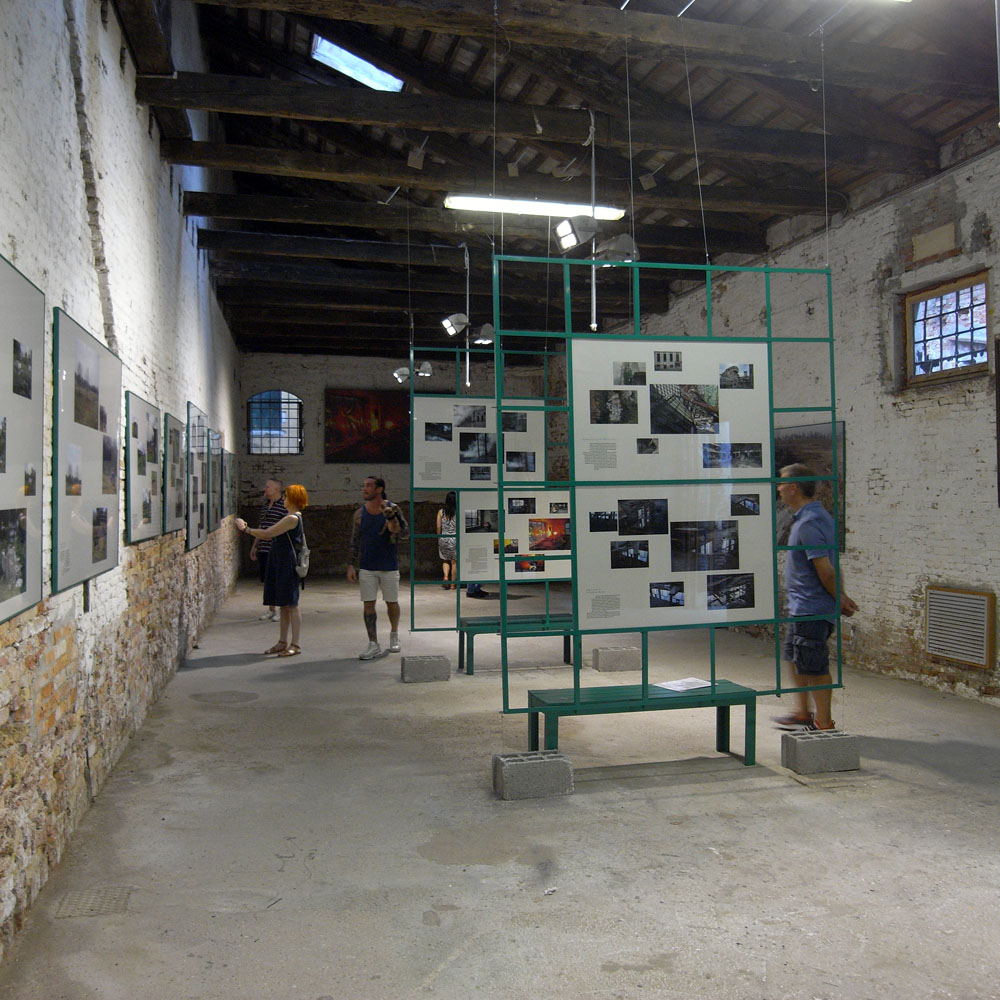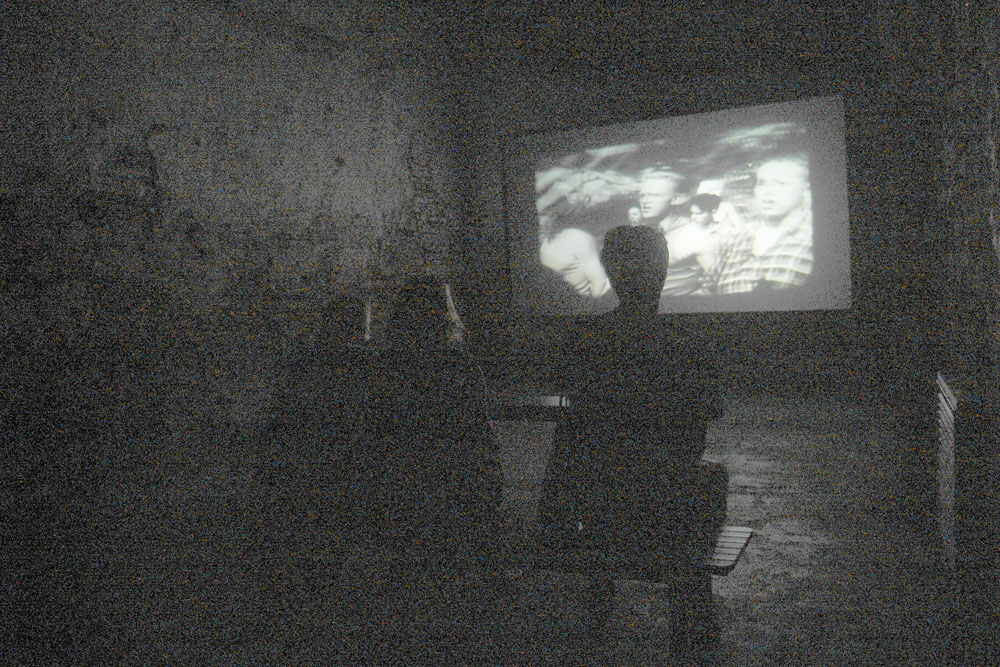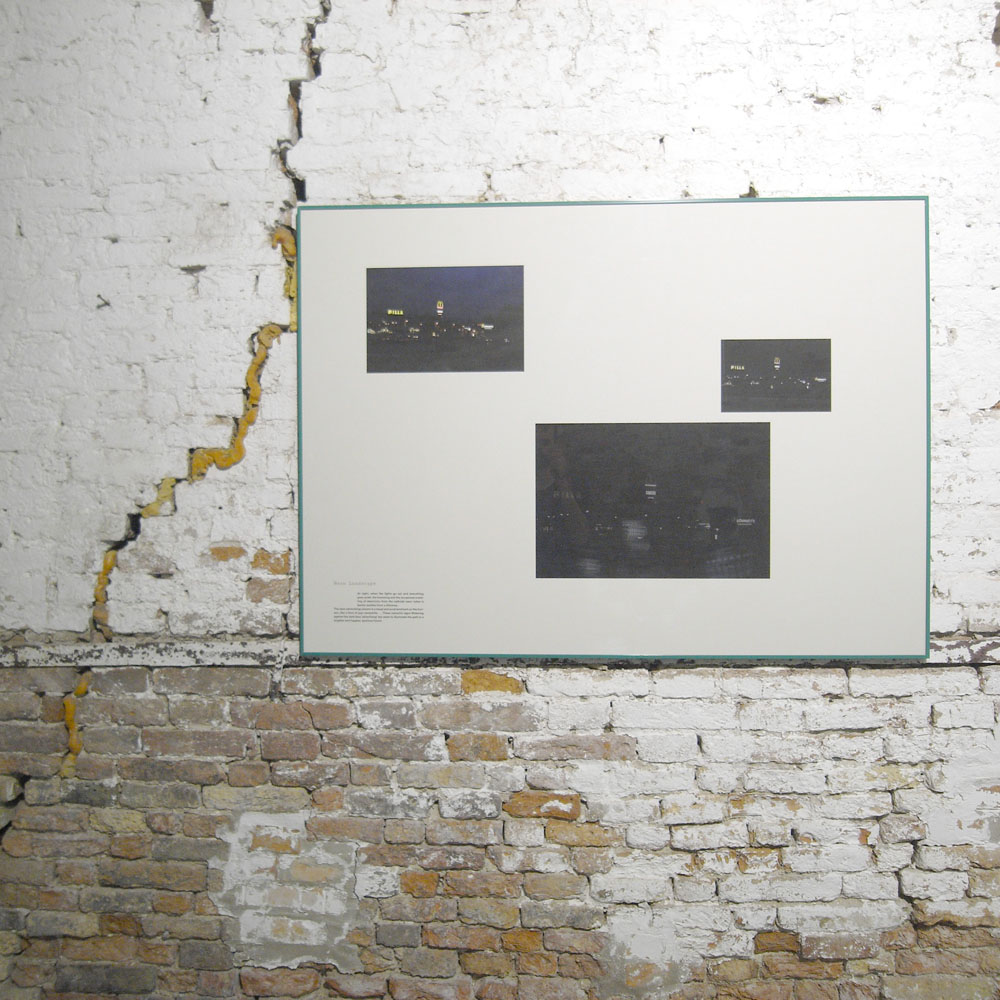Venice, Santa Croce 2258, Calle della Regina, http://igorgrubic.org/
Igor Grubic seems to be most of all a documentary photographer and urban explorer: Old factories, temporary shelters built by homeless people, disappearing handicrafts… The printed panels with photo collages in the exhibition looked like storyboards or pages from a book. Indeed a thick catalogue was available for purchase. But for the exhibition, I would wish for a bit livelier, more concise and to-the-point installation. Even though everything was setup very nicely, it reminded me of those (for me usually boring) architectural shows with large printed out panels with image collages. And that was a pity, because the content was really something worthy getting to know. In fact, I would say photographic investigation into temporary architectural structures or industrial architecture is already a genre in itself, but this is was a very welcome addition from a different location.

Somehow I felt as if the artist was too hesitant to select and cut out what is superfluous, and instead attempted to present everything. This might work in a book format, but it was was simply too much to take in in the exhibition. On top of that, to add something more, the artist created an animation combining the presented photos of an abandoned factory and overlaid it with comics-style vector animation, adding yet another storyline. Good intentions but simply too much.

Another thing I felt was East European nostalgia, especially in the handicrafts and old factory photos. Somehow this remembering of the past and longing to keep the memories alive is a common denominator for a number of East European works. It also exists in the West, e.g. Bernd and Hilla Becher were also primarily driven by documentary and preservationist motives and ended up being celebrated as conceptual artists rather by mistake, but still, there is more of this in East Europe. The transformation was fast and drastic, faster that the meatware (brain) could adapt.
The accompanying catalog, very thick, looked great.
